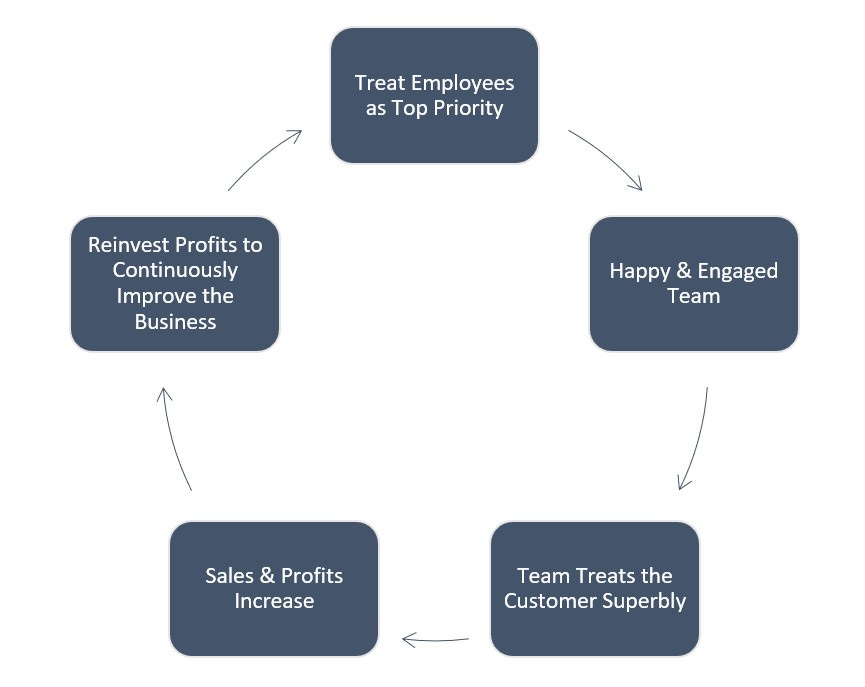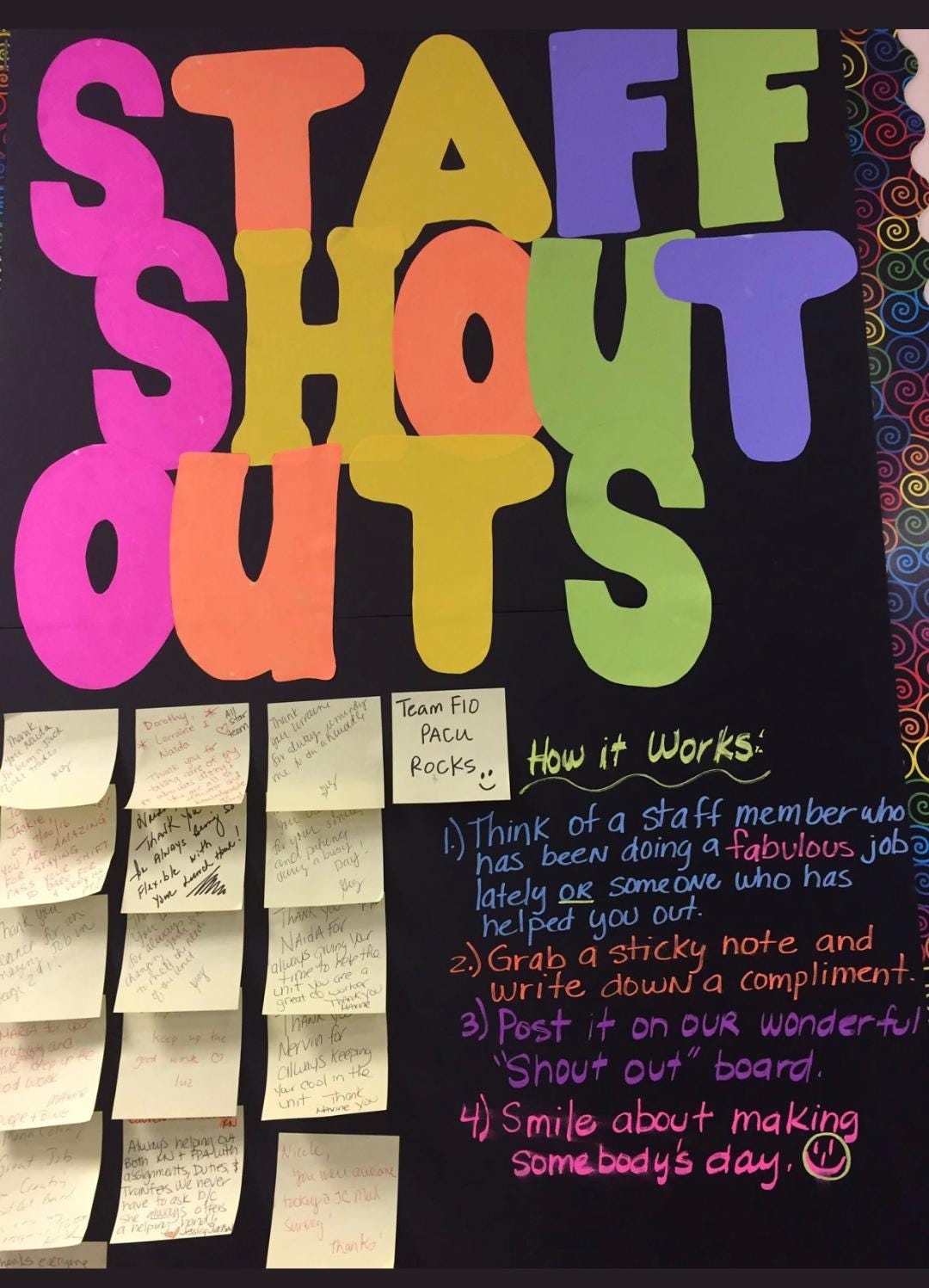All Things Retail #8: Rules of the Road
Welcome back and continued thanks for all of your support of All Things Retail.
This issue will be a bit different, as we are focusing on one theme: people.
Why? Take a look at the Rules of the Road below and I will explain. Let me know if this “thematic” spin to an entire issue is something you would like to see more of.
But a bit of business first. We are hovering around 8,000 subscribers, but like any effort, we need growth to continue improving our product (this newsletter). So, as I ask every week, please share All Things Retail with anyone and everyone you believe may enjoy it (and hopefully benefit from it).
If you have not subscribed yet, please do so now. It’s free and we publish once a week so we don’t jam up your inbox.
Rules of the Road (5 of them)
Over many years (no snide comments please) of working in the world of retail, I have developed a framework for leading businesses and managing teams. Part of this framework are a set of “rules” that I use as my “guiding light” for how to run a business or a piece of a business. They were developed from real world experience and have proved themselves to be highly effective time and time again. Let’s discuss those in a moment.
Pivot to people. People are the lifeblood of every business and they are the greatest asset of every business. The old saying, “the customer comes first”, is flawed. There is no way to put the customer first unless your people are fully engaged in your business (understanding the reason for being and the goals, motivation, inspiration, product knowledge, dedication, loyalty…you get the idea). I know no other way to accomplish this unless you put your people first. By doing so, it creates a powerful flywheel that drives immense consumer satisfaction.
People, or lack thereof, are all over the business news. Job openings are everywhere. Businesses are cutting back their hours (or closing completely) because they cannot staff their stores or restaurants. For many that are working, changing jobs is happening more and more frequently. As a result, wages are rising to levels never anticipated a year or so ago to attract and retain team members (this is outside the broader discussion of minimum wage and what is fair and just). It’s a real issue which I believe will continue well beyond the expiration of the extra unemployment benefits a few months from now.
So, what’s a retailer to do??? See the flywheel image above. Treat your people as #1. OK, that sounds good. But how? I would begin by imbedding the following 5 Rules of the Road into your business. They create a structure for your business and a set of expectations that your team will (if communicated properly and adhered to pretty religiously) embrace. To put it simply, these rules will add real value to your business, in part by inviting and allowing your team to contribute to creating that added value. This will create greater employee satisfaction, improved retention, and street cred that will help attract new team members when needed. Try it, you’ll like it. Here we go:
Keep it Simple: Boy oh boy can we make things complicated. Operations manuals that weigh more than the Yellow Pages. A new form or policy for every issue that arises. Teaching (I use that term loosely) cashiers 10 things to repeat like a parrot to every customer checking out. Providing thick notebooks of canned responses (which are often not helpful) for customer service reps. Most businesses are filled with complicated stuff that reduces efficiency, diminishes the consumer experience, and frustrates team members. Getting to a KISS (Keep is Simple, Stupid) mentality begins with leadership.
Before you create a new rule, process, or procedure, take a deep breath, and ask yourself if it’s necessary. If not, dump it. If so, be sure it’s clear, concise, and easily executed. I tend to prefer dumping it (see 80/20 below).
Ask your team members what makes their lives difficult. Encourage openness as most will not want to comment honestly at the outset. Explain the importance of their thoughts for you and that their input is valuable for improving and growing the business. Most will eventually spill the beans. When they do, LISTEN. Don’t be defensive. Take it in, write it down and ponder the feedback. Much of it will revolve around making the team’s life more efficient and thus more productive. If it’s logical, enact it. Then shout out your thanks for the feedback and encourage more of it. When you get to this point, the positive momentum will have begun. And your people engagement will be headed way, way north!
Pick one process or procedure a day. Put yourself in your employee’s shoes and ask yourself “is this necessary?” and “could this be simpler?”. Be objective. Based on your answer, make the appropriate changes, which will get you one step closer to simplifying your business.
2. Focus on Results: Businesses don’t succeed on effort alone. Achieving expected results is a must to keep any company moving forward, and your team needs to understand this. “I’ll do the best I can” is not the same as “I’ll get it done!”. This shift in mindset begins when you are specific about setting the goals for any individual task, project, day’s work, etc. Assign the responsibility, explain how to accomplish the goal, and set a clear expectation of what the targeted results are. Team members will step up to the challenge and perform at a higher level when they are clear about the deliverables. When they achieve those results, celebrate it, loud and often. This will contribute to your growing culture of success and it will keep your team feeling a greater bond to the business.
3. Measure It: Goals and expectations cannot be vague. “Get as much freight out (or get a lot out) as you can during your shift” is a poor directive. Your expectation may be 100 cartons while your person doing the stocking may interpret it to mean 50 cartons. What follows is likely under-performance, disappointment on your part and a correlating sense of frustration for the team member. This does nothing to move the business forward and it certainly does not make your team feel more engaged. Conversely, if you assign 100 cartons to be stocked, chances are you will get 100 cartons stocked (or more). With that measurable result you build a sense of accomplishment for the person who did the stocking, you create an opportunity to celebrate a successful result and you strengthen your team and your business. Of course, if you set measurable goals, you better measure the results vs. the goal. Always!
4. 80/20: Also known as the Pareto Principle, this rule suggests that 20 percent of your activities (or 20% of something) will account for 80 percent of your results. We wrote about 80/20 in Issue #2 but here is more >>> 80% of problems originate from 20% of projects. 80% of sales are generated from 20% of your products. 80% of your store/ site traffic comes from 20% of your ad spend. 80% of complaints come from 20% of your customers. Keep in mind the ratios may shift somewhat but the principle remains the same. Input and results often do not correlate. You get the idea. So now what? Begin a relentless focus on the 20% of everything that gives you 80% of the results. Keep top products in stock. Take better care of your best customers. Cut back on non-productive ad spend and save or re-allocate the dollars. It’s an ongoing and highly productive process. Done well, this makes for a more exciting, more focused, more challenging, and more productive workplace. You and your people will be laser focused on high priority efforts that will result in a greater sense of achievement, more celebrations, and a stronger team bond than ever before.
5. Stores Back: How often are your driving somewhere, or perhaps showering in the morning, and a “great” idea pops into your head? Given your bias for action (read “In Search of Excellence” if you haven’t), you immediately write up the process or action or promotion and send it out to the stores to execute. My guess is, more often than not, you are disappointed in the results of or the compliance with your idea. Why? Most likely because the concept was created, planned, and directed from the top down, without detailed consideration of the store team’s ability to understand and implement it as well as any unintended consequences. Believe it or not, the team members in your stores typically have a great sense of what works, what doesn’t, what’s lacking, and all kinds of other stuff about the operation. Leverage that and engage with them to create a “stores back” perspective of everything you do. Ask questions, listen, test. Do everything necessary to gain a great level of comfort that what you do, or don’t do, makes sense for your stores. If you achieve that, your team will be more aligned with you than ever, and guess what. They will be happier, more productive and will take better care of your customers than ever. See that flywheel pic at the beginning of this section.
Keeping your team happy, engaged, motivated, loyal, and productive is an ongoing effort. Every action or inaction by leadership may have an impact. But one thing is clear, if you run the business efficiently, consistently and in an engaging and collaborative manner (“ask then listen, listen, listen”), you will be successful in this challenge more often than not. These Rules of the Road* will help. Try them out and let me know what you think.
* I “borrowed” the term “Rules of the Road” from Toy Industry Hall of Fame member, Neil Friedman
Retail News & Happenings
Given the recent challenges with hiring and retaining staff, let’s focus on some articles (and then some pics) about our greatest asset, people:
Top Companies 2021: The 50 best workplaces to grow your career in the U.S.
Only five retailers made LinkedIn’s list of the 50 best workplaces to grow a career in the United States. What’s up with that?
5 Things Emotionally Intelligent Leaders Can Do to Retain Remote Workers
Don’t Underestimate the Power of Kindness at Work
Retention and recruitment: What leaders need to know in the post-pandemic workplace
7 Reasons Humility is Becoming a Highly Desired Leadership Trait
What Retail Workers’ Attire Communicates to Customers
Retail Loss Prevention Leadership Lessons from the Pandemic
Cool Pics
Quotes of the Week:
"Coming together is a beginning... Keeping together is progress... Working together is a success."
- Henry Ford
"Treating employees benevolently shouldn't be viewed as an added cost that cuts into profits, but as a powerful energizer that can grow the enterprise into something far greater than one leader could envision."
- Howard Schultz - founder and former CEO of Starbucks
"Clients do not come first. Employees come first. If you take care of your employees, they will take care of the clients."
- Richard Branson - founder of The Virgin Group
OK, now it’s time to share this issue with your friends, family, co-workers and more!
If you still haven’t subscribed, now it the time!












